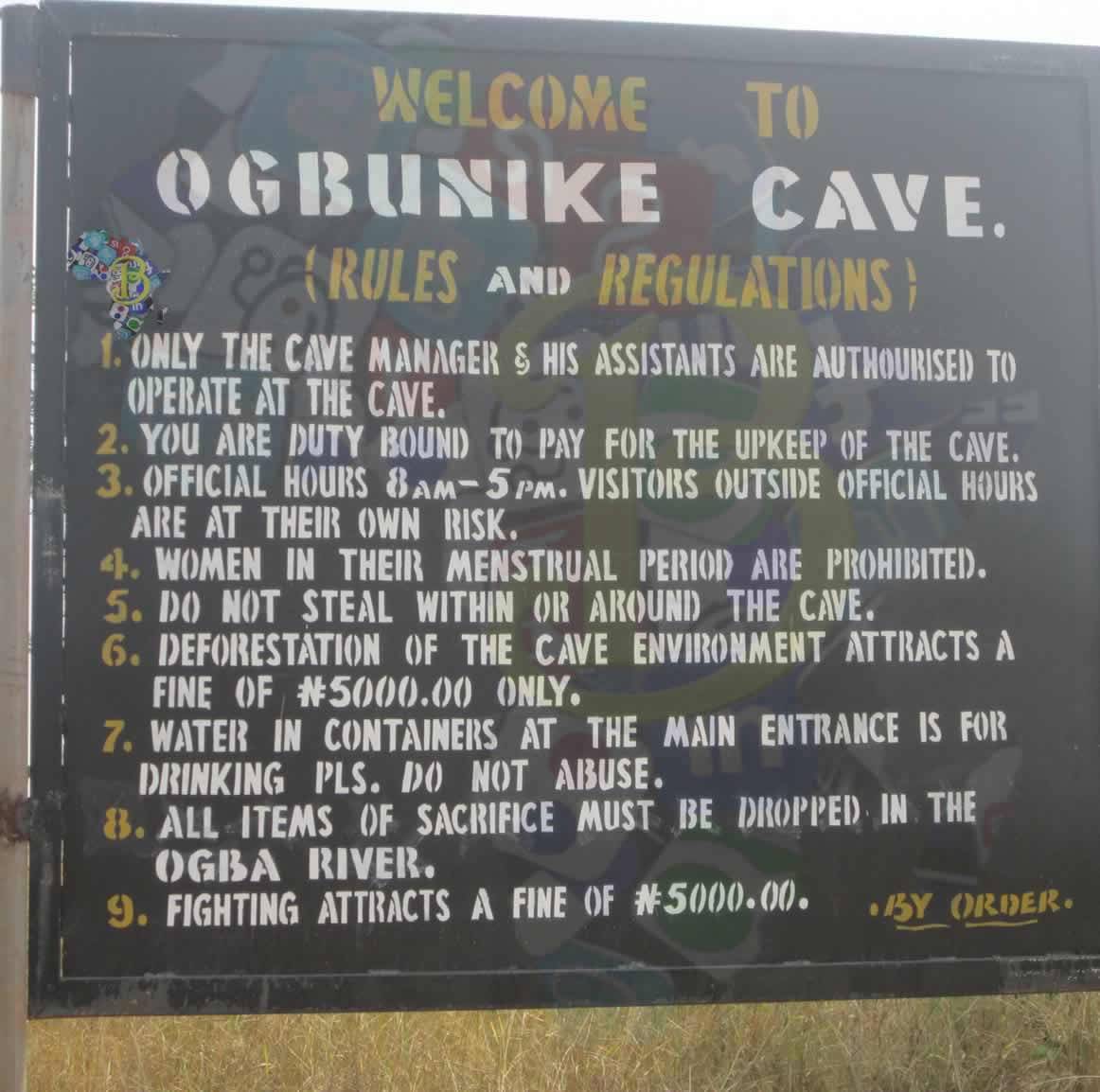THE OGBUNIKE CAVE
 The cave is located at “Ugwu Ogba” behind the "Ogba" hills in which lies St. Monica College, in Ogbunike, a town in Oyi Local Government Area, Anambra State, Eastern Nigeria. The Ogbunike caves were discovered by a hunter named Ukwa from the Umucheke family of Ifite-Ogbunike, about 4000 years ago. The caves were used in the past to hide from slave raiding parties during the slave trade era and place of refuge during the Nigerian Civil War.
The cave is located at “Ugwu Ogba” behind the "Ogba" hills in which lies St. Monica College, in Ogbunike, a town in Oyi Local Government Area, Anambra State, Eastern Nigeria. The Ogbunike caves were discovered by a hunter named Ukwa from the Umucheke family of Ifite-Ogbunike, about 4000 years ago. The caves were used in the past to hide from slave raiding parties during the slave trade era and place of refuge during the Nigerian Civil War.

Photo credit: Wikivoyage
Descending into the valley where the caves are located is a lengthy walkway made up of about 317 steps said to have been constructed by the Anambra State Government in the 90s. At the end of the walkway is an open space used as a reception point where visitors are by tradition to remove their shoes.
The main cave consists of a massive structure with a big open chamber of about 5m high, 10m wide and 30m long at the entrance. Within the caves, there is a large colony of harmless bats of various sizes. The water around the caves is also thought to be divine. A stream flows out from one of the caves’ tunnels into River Nkissa, a rapidly flowing river at the foot of one of the caves’ exits. At the meeting point of the river and the stream one can feel the warm water from the caves and the cold river water.
One cannot leave the caves by the same entrance they came in. This is not negotiable; visitors have to wriggle and crawl their way through until they are led to another passage. Beside this portion of the river is a table land of about 5 x 5 square meters used as a relaxation spot by visitors to the caves. The immediate environment of the caves up to about 200 meters radius is a thick tropical rainforest type of vegetation.
Photo credit: Nairaland Forum
Ogbunike Cave is associated with living traditions and has been used by the people for many centuries; the site still retains its historical and spiritual significance. The site still retains its historical and spiritual significance. There is an annual festival called "Ime Ogbe" celebrated in commemoration of the discovery of the caves. Whether you believe these things or not, the Ogbunike caves have taken on an essence that makes them different from any random naturally-occurring underground structure within or without Nigeria. There are rules, provisions, and celebrations that seek to preserve their sanctity and honor their significance in times of old and nowadays.

In 2007, the National Commission for Museums and Monuments submitted Ogbunike Cave to UNESCO, under mixed category, to be considered as a World Heritage Centre. For now, the Cave is still on the tentative list.
References
‘Ogbunike Caves’. Retrieved from https://en.wikipedia.org/wiki/Ogbunike_Caves
‘Ogbunike Caves’. Retrieved from https://whc.unesco.org/en/tentativelists/5174/
‘Ogbunike Caves is one of the Nigeria’s most impressive natural wonders hiding in Anambra’. Retrieved from
 Igbo Language & Culture
Igbo Language & Culture